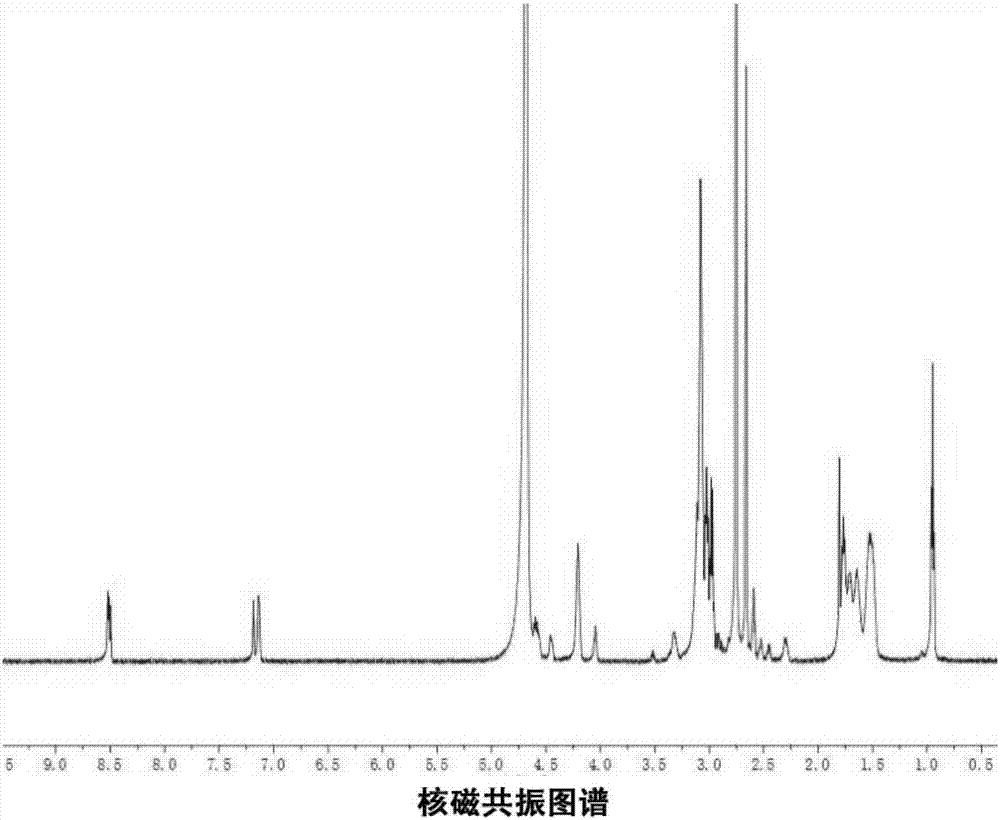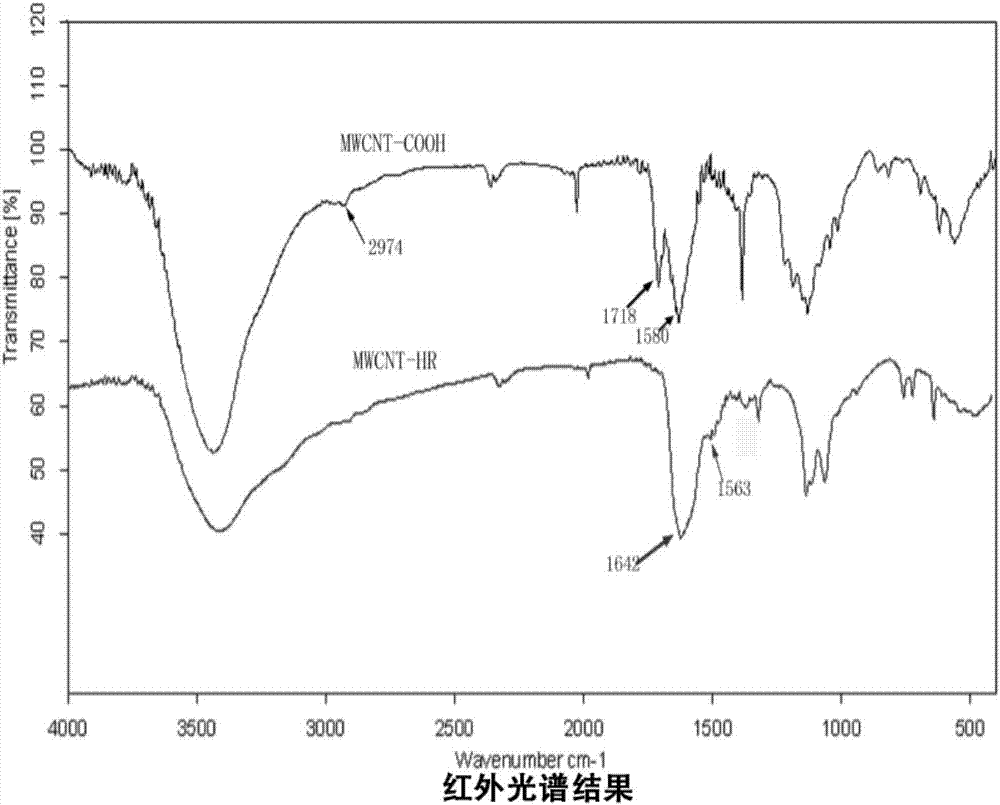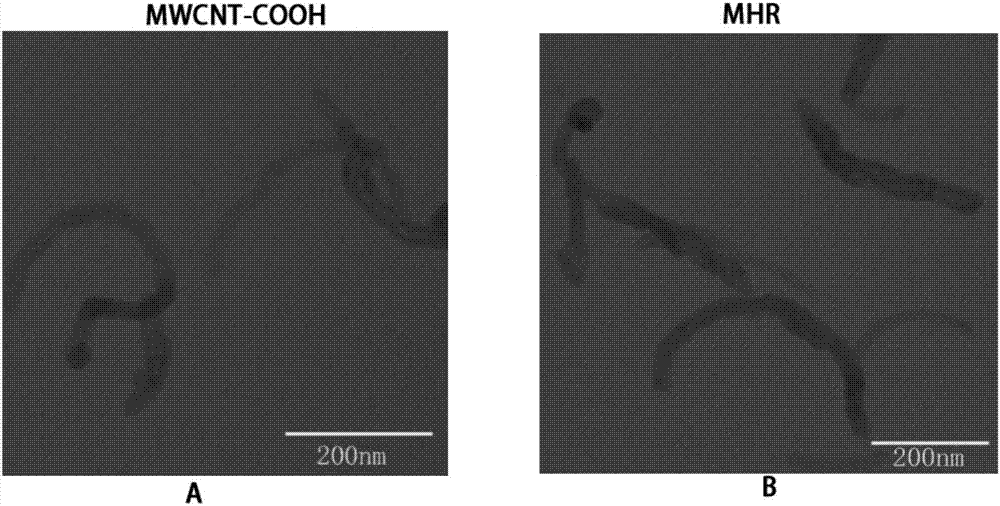Peptide-modified multi-walled carbon nanotube carrier as well as preparation method and application thereof
A technology of multi-walled carbon nanotubes and carriers, which is applied in the field of medicine to achieve the effects of enhancing cell uptake rate, enhancing solubility, and mild reaction conditions
- Summary
- Abstract
- Description
- Claims
- Application Information
AI Technical Summary
Problems solved by technology
Method used
Image
Examples
Embodiment 1
[0054] Embodiment 1: the synthesis of HR
[0055] 9-peptide HR amino acid sequence: His His His Arg Arg Arg Arg Arg Arg Arg (His, histidine; Arg, arginine) (SEQ ID NO: 1), HR, from Shanghai Jill Biochemical Co., Ltd. using the peptide solid-phase synthesis method It was synthesized and named as HR, and the synthesized HR was purified by preparative high-performance liquid chromatography to make its purity more than 95%. R is arginine, H is histidine, and the amino acids are connected by peptide bonds to form a 9-peptide.
Embodiment 2
[0056] Example 2: Preparation of peptide-modified multi-walled carbon nanotube carrier MHR
[0057] Carboxylation modification was carried out on the surface of multi-walled carbon nanotubes, and then the surface carboxyl groups were activated, and peptide solid-phase synthesis was carried out according to the sequence of HHHRRRRR (according to the mass ratio MWCNT / HR, 1:30), and the reaction was stirred for 24 hours. The carboxyl group and the amino group on histidine can be connected through an amide bond to obtain MHR, and then centrifuged at high speed to measure the electrical path of MHR, and then use a transmission electron microscope to investigate the morphology of the peptide-modified MHR, and use nuclear magnetic resonance spectroscopy and infrared spectroscopy to identify the obtained Structural features of polymers. The results of H NMR spectroscopy are shown in figure 1 , the infrared spectrum results see figure 2 , TEM of carboxylated carbon nanotubes and pep...
Embodiment 3
[0058] Example 3: In vitro transfection efficiency investigation of MHR / pEGFP
[0059] Select the mouse macrophage cell line RAW-264 (purchased from the Cell Culture Center of Shanghai Institute of Biological Sciences, Chinese Academy of Sciences), add MHR-loaded EGFP plasmids with different nitrogen-to-phosphorus ratios (5, 10, 20, 40), and configure the nanocomposite vortex After spinning for 10 seconds, let it stand for 30 minutes, add it to the well plate, and after culturing for 4 hours, replace it with fresh medium, and continue culturing for 24 hours. Fluorescence microscopy to observe cell transfection, such as Figure 5 shown. Figure 5 It shows that the transfection efficiency of MHR is the best when N / P=10.
PUM
 Login to View More
Login to View More Abstract
Description
Claims
Application Information
 Login to View More
Login to View More - R&D
- Intellectual Property
- Life Sciences
- Materials
- Tech Scout
- Unparalleled Data Quality
- Higher Quality Content
- 60% Fewer Hallucinations
Browse by: Latest US Patents, China's latest patents, Technical Efficacy Thesaurus, Application Domain, Technology Topic, Popular Technical Reports.
© 2025 PatSnap. All rights reserved.Legal|Privacy policy|Modern Slavery Act Transparency Statement|Sitemap|About US| Contact US: help@patsnap.com



